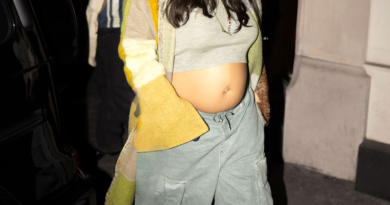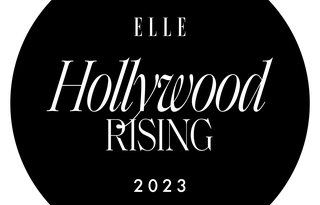What Truth Does <i>The Crown</i> Owe the Monarchy?
Within the first 10 minutes of Netflix’s long-awaited fifth season of The Crown, Dominic West’s Prince Charles turns to Elizabeth Debicki’s Princess Diana and leans in close, suddenly conspiratorial. “What do you think?” he asks. “Shall we give them some of the old magic?” Diana, ever up for a performance, is game: “Well, come on then. Let’s blow them away.”
They’re referring to the insatiable crowd of Italian paparazzi huddled along the coast where Charles and Diana have temporarily docked during their “second honeymoon.” It’s a stunt trip, one designed to convince the public their marriage is in ship-shape and not shrinking faster than the press office can spin it. But the exchange also serves as a nod to the fictional narrative the Prince and Princess of Wales have bought into—and benefitted from. Charles is all too aware that, in public, they’re “the perfect team,” as glittering a couple as history can remember. He’s the stately heir, crisp-suited, a supposed advocate for progressivism. She is the supposed image of progressivism, thrilling in her short-cropped hair and chic sunglasses. But in private, both their impetuous backstabbing and their haunting loneliness are near-constant reminders that the scaffolding of their union is a lie.
The scene might as well be a metaphor for The Crown itself, and show creator Peter Morgan is smart enough to recognize it. The series is fictional, which means it should not be treated with the authority of biography. It’s a dramatization rooted in well-established fact, scandalous rumors, and historical accounts from hundreds of sources with differing ulterior motives, including those within Buckingham Palace’s walls. Not everything depicted on screen actually happened. Plenty of it did. Either way, like in all fiction, there is a truth Morgan is attempting to uncover as his characters re-trace the known footsteps of Queen Elizabeth II’s reign. There is a truth that the palace tried (and continues to try) to bury, whether out of duty, embarrassment, or a tepid brew of both.
Season 5—and the series as whole—is therefore an interrogation, albeit a remarkably gentle one, of what went on behind these closed doors, and particularly how Elizabeth herself impacted the family members in her orbit. The series bears its name for a reason: It is not, for instance, called The Firm or even The Monarchy. It is The Crown; it is about the woman who wears that much groused-over headpiece, and what she represents. The drama is a humanistic character study, not a political thriller or a documentary, and it is often stubbornly devoted to both sides-ism. Morgan said it himself, following the queen’s death earlier this year: The Crown is intended as a “love letter” to Lilibet.
Yet in the lead-up to season 5’s release today, it’s become increasingly clear how worried the real-life royals and their supporters are about the show’s contents, particularly as the now-King Charles III stretches into his new role as monarch. They remember, all too well, the chaos of the mid-80s and ’90s, and they would prefer it not further sully the sovereign’s reputation.
So it’s not surprising that even a casual Google search reveals numerous recent headlines accusing The Crown of mismanaging its storytelling duties. Case in point: Former Prime Minister John Major lambasted a scene in season 5 as “damaging and malicious fiction,” in which West’s Charles suggests the monarchy is suffering from so-called Queen Victoria Syndrome. Major issued a statement via spokesperson ahead of the episode’s release, saying, “There was never any discussion between Sir John and the then Prince of Wales about any possible abdication of the late Queen Elizabeth II.” The irony, of course, is that at no point in this scene does West’s Charles actually advocate for his mother’s abdication. He instead suggests his voice ought to be further “incorporated,” and frets over whether the institution is “in good hands.”
Still other monarchists have preemptively criticized the depiction of a platonic relationship between Prince Philip and Penny Romsey (now Penny Knatchbull), with the queen’s former press secretary Dickie Arbiter calling the inclusion “distasteful,” per Sky News. He added, “The truth is that Penny was a long-time friend of the whole family. Netflix are not interested in people’s feelings.” Again, the irony is significant: The Crown season 5 takes pains to establish that the relationship never turned romantic, despite rumors of Philip’s infidelities. As journalist Tina Brown wrote in her book The Palace Papers, “Once in a while there was a gossip flare-up about Romsey. The Queen’s response was to invite her to travel in the car with her to church on Sunday, and they were photographed chatting amicably … The Queen seems to have decided that Romsey was necessary for her husband’s good humor.” This is exactly what is depicted in The Crown.
Nevertheless the battle over “truth” has raged on. The conversation heightened when actress Judi Dench, a friend of both King Charles and now-Queen Consort Camilla, added her voice to the chorus. In a letter to The Times, she wrote:
“While many will recognise The Crown for the brilliant but fictionalised account of events that it is, I fear that a significant number of viewers, particularly overseas, may take its version of history as being wholly true. This is both cruelly unjust to the individuals and damaging to the institution they represent…
No one is a greater believer in artistic freedom than I, but this cannot go unchallenged. Despite this week stating publicly that The Crown has always been a ‘fictionalised drama’ the programme makers have resisted all calls for them to carry a disclaimer at the start of each episode…
The time has come for Netflix to reconsider—for the sake of a family and a nation so recently bereaved, as a mark of respect to a sovereign who served her people so dutifully for 70 years, and to preserve its reputation in the eyes of its British subscribers.”
Netflix dutifully drafted its own response: “The Crown has always been presented as a drama based on historical events. Series Five is a fictional dramatisation, imagining what could have happened behind closed doors during a significant decade for the royal family—one that has been scrutinised and well-documented by journalists, biographers and historians.” Translation: There is truth here, whether you wish to acknowledge it or not.
There are no shortage of news outlets devoted to fact-checking The Crown, including the one you’re reading now. We’ve assessed the depictions of Princess Diana and Prince Charles’s wedding; the 1982 Buckingham Palace break-in; even Princess Diana’s performance of “Uptown Girl” onstage at the Royal Opera House. There’s no doubt The Crown takes numerous creative liberties. But what intrigues me most in all this debate over fact versus fiction is what audiences actually want from The Crown, and what version of the truth the series owes the monarchy.
Dench has at least one thing right: The perceived truth or plausibility of a fictional work’s events does impact viewer responses, particularly their empathy. Ethically, storytellers have a duty to not betray or manipulate that empathy without proper cause. If a story is represented as true, plausible, or even based in truth, then the empathy that provokes must not be handled lightly. (For recent examples of this phenomenon handled poorly, see: Monster: The Jeffrey Dahmer Story, Blonde, etc.) Fictionalization is not a catch-all excuse for playing recklessly with reality, regardless of whether the real people depicted are living or dead. Or royalty.
It is also true that some younger viewers are likelier to believe The Crown’s version of events over the Firm’s, as a YouGov survey reported by the BBC found. As one history professor told the BBC, “There is a real gap in historical knowledge, so that younger people often do assume that what they’re seeing in a historical drama is real.”
These comments were made prior to season 5’s release, and what they fail to address is whether or not the series actually does adhere to the truth, and to whom The Crown ultimately owes its allegiance. The series is not propaganda, nor should it be; a story’s duty is ultimately to its audience.
Yet all the hubbub over how damaging season 5 was certain to be for King Charles’ fledgling rule is still proved laughable by the time the finale episode draws to a close. Season 5 is even-handed, perhaps to a fault. Imelda Staunton’s Queen Elizabeth II indeed recedes from the spotlight as her family drama mounts, but that happened in real life as well. Staunton’s Elizabeth is depicted as distant but dependable; Debicki’s Diana as incandescent but irrational; West’s Charles as miserable but misunderstood. In other words, nearly everyone is given the “both sides” treatment, which is perhaps the safest route The Crown could choose. Many scenes require next to no true “fictionalization”; they are meticulously re-created from heavily documented accounts or real-life footage. Other scenes are indeed imagined, some of which almost certainly never took place. (One heated conversation between Princess Margaret and Queen Elizabeth stands out, though actress Lesley Manville maintained in an interview with ELLE.com that the scene is representative of a larger, very real dynamic between the sisters.)
In each of these narrative choices, season 5 enjoys moments where it flounders and moments where it soars. The series is often too cowardly in its criticism of the royal institution. But there are times when its careful touch is warranted, giving both camps in the War of the Waleses their fair say. (Even Charles and Camilla come out the other side looking more like Romeo and Juliet than Edward and Wallis.) Staunton’s Elizabeth, like Olivia Colman and Claire Foy’s before her, is framed through a lens of wistful affection: She is brilliant in her work, unflappable in her devotion to it, and antiquated in nearly every one of her interactions. And yet, as The Crown speeds toward its final chapter, the queen’s relevance to the outside world is not so much questioned as it is mourned.
In another early scene from season 5, Staunton’s Elizabeth reveals she’s proud of any press comparisons to the steady, stately Queen Victoria, her great-great grandmother—even if these comparisons were intended as insult. “As my great-great-grandmother, who started the Western Isles Tour said, ‘Let time slow down so that one breathes freedom and peace, making one forget the world and its sad turmoil,’” she tells Johnny Lee Miller’s Prime Minister Major.
The real-life monarchy, perhaps, would like to echo this sentiment: to forget the sad turmoil of the past, and the tragedies that took place during Queen Elizabeth’s long and magnificent reign. Especially after the late monarch’s death, this desire seems reflected throughout much of the world. But The Crown does not owe its audience amnesia, nor would a Firm-approved accounting of events be any more accurate to truth. (After all, the royal family has its own long history of unleashing spin doctors upon the press. As Brown wrote in The Palace Papers, “Whatever the high-minded stance toward the vulgarity of publicity, all the households competed furiously—and still do—for positive coverage.”)
The Netflix drama instead owes both its audience and the monarchy a faithful handling of their empathy. It owes something as near to truth as possible, even if only a symbolic understanding long tucked behind political reverence and, as Charles might put it, “old magic.” The Crown should not be treated as fact. Nor should it be so easily dismissed as folly.
Lauren Puckett-Pope is an associate editor at ELLE, where she covers film, TV, books and fashion.






